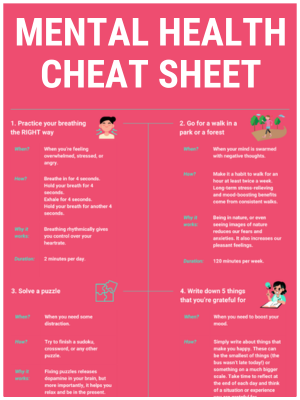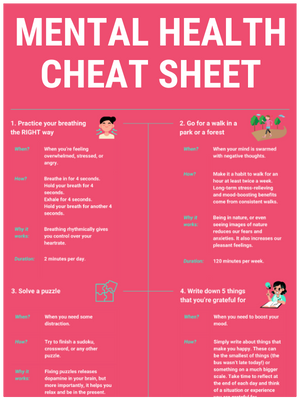We’ve all been there: listening to sad ballads when we’re feeling down because they match our mood. Or the opposite: trying to cheer ourselves up with cute cat videos. But which is the better option, choosing something that matches your mood or going for the opposite?
Our mood affects the media we consume, and in turn, the content will affect our mood. An uplifting story can make us feel better, but if we’re feeling really down, positive news stories and happy songs can make us feel even worse – and so can sad ones. If you’re really unlucky, you can get stuck in a never-ending cycle of worsening mood that is very difficult to break out of. But since content can affect mood in different ways, you can make the influence work in your favor, if you know which choices to make.
In this article, I’ll take a look at how the media you consume affects your mood and how to make this interaction work in your favor.
Contents
Media as a mood management strategy
In general, people will try to improve their mood or at least diminish emotional discomfort. To do so, we manage our surroundings, interactions with other people, and the media we consume. This is known as mood management theory.
While going out for a walk or meeting up with friends while we’re feeling down requires quite a lot of energy, choosing a video or movie to watch is a fairly low-effort way to manage our mood, which makes it the go-to approach for many people.
Mood management theory
According to mood management theory, people always strive to maintain a good mood and improve their low mood. This seems intuitively logical because feeling good is always better than feeling bad or low, right?
But this theory doesn’t explain why we listen to sad ballads after a breakup. A 2010 study found that people tend to consume media that matches their mood.
In the study, sad participants showed a preference for watching a dark comedy or a social drama, whereas happy participants showed a preference for viewing a slapstick comedy or an action adventure.
One explanation behind this is that lonely people receive a mood boost from watching lonely characters because this allows them to engage in self-enhancing downward social comparisons.
Another reason might be that people view negative mood-congruent media as informational – by viewing a character in a similar predicament, they may learn coping skills.
In light of these findings about media consumption as a mood management strategy, let’s take a look at how exactly the content we consume can affect mood.
💡 By the way: Do you find it hard to be happy and in control of your life? It may not be your fault. To help you feel better, we’ve condensed the information of 100’s of articles into a 10-step mental health cheat sheet to help you be more in control. 👇
Feel-good media
2020 was a nightmare for many people. From a global pandemic to racial justice protests, it’s no wonder that many people turned to uplifting, feel-good media to distract themselves from the grim reality.
Watching a movie with an uplifting story and a positive message can provide hope. According to a 2003 study, good comedy can have an even greater mood-lifting and anxiety-lowering effect than exercise.
In addition, positive media can simply provide a distraction from our day-to-day lives. For example, I have been watching The Big Flower Fight on Netflix, where teams of florists compete in creating flower sculptures. Not only is the craftsmanship amazing, but the flow of the show is so relaxing and positive that it’s fantastic for unwinding at the end of the day.
According to a 2017 study, looking at positive, self-compassion related social media posts can also reduce negative mood, in addition to improving body appreciation and self-compassion.
However, not all social media content is created equal. A 2020 study found that fitspiration-type posts calling people to improve their personal fitness increased negative mood.
Feel-bad media
As the name implies, feel-bad media is the opposite of feel-good media. It’s usually what we try to escape by consuming feel-good content.
The news as feel-bad media
The best example of this is the news media that we consume every day.
Although there are positive and uplifting news stories, an overwhelming amount of news are stories about violence and tragedy.
And because of how connected we are with the rest of the world, the news we see isn’t only limited to our own countries or communities, but we are witnesses to worldwide events.
Secondary traumatic stress
Secondary traumatic stress is well-documented in helping professions, where it’s people’s job to listen to the horrifying stories of others. But a 2015 study shows evidence that simply following the news on social media can trigger secondary traumatic stress in anyone, no matter the profession.
Secondary traumatic stress is usually characterized by increased anxiety or fear, and feelings of helplessness, and it can cause nightmares or other sleep problems. All of these things also affect our general mood.
For me, the height of the Covid-19 pandemic was one of the hardest periods to live through because of the constant reports of new cases and deaths, not only in my country, but all over the world. No one has the mental and emotional capacity to mourn thousands of deaths every day, nor should we be expected to.
How to manage your mood using media
It’s clear that our mood affects the media we consume, and in turn, media affects our mood. While we may not always be able to fully control our mood, there are a few simple tips when it comes to media consumption.
Almost every social media platform offers numerous tools that allow you to fully control what you see on your feed, so use them.
Curate your feeds to only include accounts that give you positive emotions. Mute or block certain keywords and accounts that affect your mood negatively, and stop hate-following people – your curiosity may be satisfied, but you won’t be.
2. Read less news
Choose one or two sites or sources to follow and stick to those. Chances are that you’re already getting at least some of your news from social media, and you can’t reasonably expect yourself to be able to keep up with more sources.
One of the best choices I’ve ever made was to disable the push notifications on my preferred news app. Unless your job requires you to keep up with the news 24/7, I highly recommend it.
3. Find your favorites
You probably have that one movie, song or story that never fails to cheer you up. Whether it’s compiling a positive playlist or even just keeping a few wholesome memes on your phone, it’s important to know what works so that you have it at hand when you need it the most.
💡 By the way: If you want to start feeling better and more productive, I’ve condensed the information of 100’s of our articles into a 10-step mental health cheat sheet here. 👇
This Cheat Sheet Will Help You Be Happier and More Productive
Thrive under stress and crush your goals with these 10 unique tips for your mental health.
Wrapping up
Our mood affects the media we consume and in turn, media affects our mood. Since it’s easily available, it’s no wonder that many people use media as a mood management strategy, but it may not always work in our favor. Both social media and the news can make or break our day when it comes to mood, so it’s important to curate what you consume.
Did I miss anything? Do you have another tip to help manage your mood using media in a smart way? I’d love to hear in the comments below!



